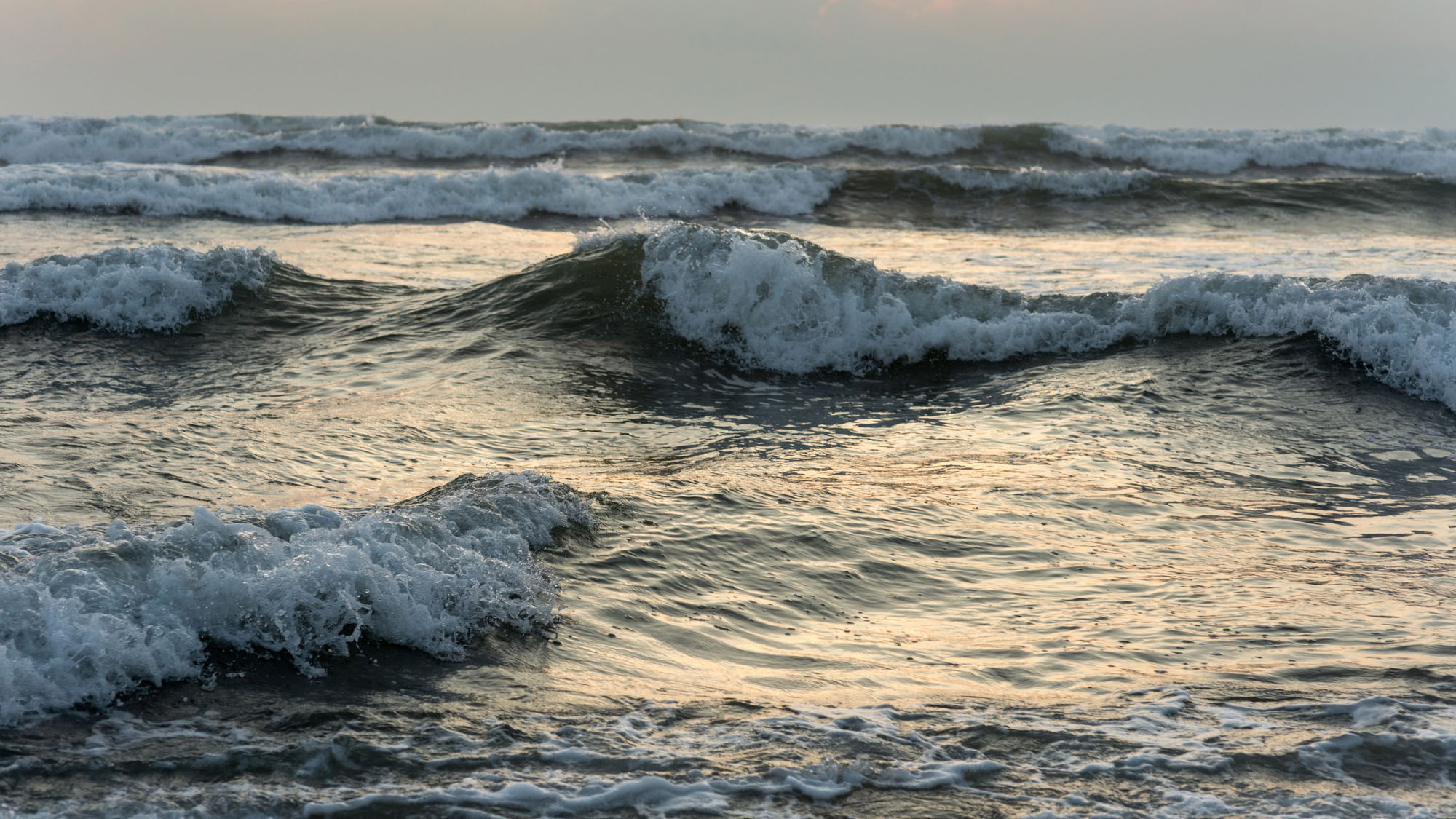

This article was originally featured on Hakai Magazine, an online publication about science and society in coastal ecosystems. Read more stories like this at hakaimagazine.com.
The Brazilian city of Linhares has legally recognized its waves as living beings, marking the first known time part of the ocean has been granted legal personhood.
In early August 2024, the coastal municipality passed a new law that gives the waves at the mouth of the Doce River, which runs to Brazil’s Atlantic coast, the intrinsic right to existence, regeneration, and restoration. This means the waves should continue to form naturally and their water must be clean.
The new law requires the city to protect the physical shape of the river, the ecological cycles that make the waves unique, and the water’s finely balanced chemical makeup through public policies and funding. It also codifies respect for the waves’ cultural and economic role in the community, explains Vanessa Hasson, an environmental lawyer and executive director of the Brazilian NGO Mapas, which advocates for the country’s nascent rights-of-nature movement.
Linhares has also appointed guardians to watch over the waves and act as their representatives in public decision-making. City officials selected Hauley Silva Valim, a surfer and cofounder of the Doce River Alliance, and two others with special relationships with the waves: a representative from the local Indigenous community and a member of the city council’s environment committee.
The prized waves are long and tubular—qualities sought out by surfers—and famous worldwide. But about eight years ago, the tight-knit local surf community began noticing changes, and two of the waves eventually stopped breaking altogether.
Valim explains that the waves at the Doce River mouth were damaged when the Mariana dam collapsed, which devastated the region—killing 19 people, flooding villages, and making headlines around the world. The dam held back waste from an iron ore mine near the inland city of Mariana, Brazil. When the dam failed, it sent a rush of mud and mining waste down the Doce River, which built up over time, shifting the river’s flow, reducing its power, and eventually weakening the waves at its mouth. It was only after a major flood in 2022 that these waves returned.
The waves weren’t the only casualty. The toxic brown sludge that spilled from the dam contaminated fishes, plants, and microscopic aquatic life for several kilometers from the river’s mouth.
From fishing to tourism, “every way of life has been impacted,” says Flavia Freitas Ramos, who cofounded Doce River Alliance with Valim. A group of about 720,000 affected residents is pursuing a class action lawsuit against the owners of the mine.
After the dam spill, Ramos, Hasson, and Valim worked with local Indigenous representatives and other stakeholders to meet with residents of Linhares over several years and build the fight for the rights of the beloved waves.
Hasson says the new law’s main goal is to change mindsets and shift public policies relating to matters such as water quality and resource extraction. It builds on a previous rights-of-nature rule passed in 2017 by Bonito, a town in northeastern Brazil, which led to the development of an agroecological plan that Hasson says has improved the soil quality, water management, and local economy.
Around the world, governments are increasingly recognizing that the natural world has an intrinsic right to exist and be defended in court. In 2008, Ecuador became the first nation to adopt a so-called rights-of-nature law into its national constitution.
Over the past decade, other countries have followed suit. Bangladesh granted legal personhood to the Turāg river, while New Zealand has safeguarded a forest, river, and extinct volcano. Recently, a salt lagoon on the Spanish coast called Mar Menor became the first European ecosystem to be granted legal rights.
Valim notes that while the dam disaster prompted the local government to protect the waves at the mouth of the Doce River, Linhares’s new law was written in a way that safeguards against other threats as well. “We are continually under pressure from port developments, oil spills, the expansion of agricultural activities, and the drastic presence of plastic and glass pollution dumped into the [river] by the cities and industries,” he says.
In addition to changing policies, rights-of-nature legislation can have legal teeth. In July 2024, Ecuador’s law resulted in a court ruling that concluded that the rights of a river running through the capital city had been violated by pollution. The new Linhares law could also theoretically be used to prosecute anyone involved in breaching the waves’ rights.
And since Linhares’s law states that the protections pertain to the entire system the waves belong to, including connected bodies of water, it could even be applied to destruction that occurs upstream, as with the Mariana dam collapse. Although, that could be difficult to enforce.
This language protecting connected waterbodies means the law also safeguards the ocean, making this the first step toward recognizing rights for the world’s oceans. A global campaign is building to do just that. “When you recognize a little bit of space of the ocean, like these waves, you are reaching the whole ocean,” Hasson says.
This article first appeared in Hakai Magazine and is republished here with permission.
